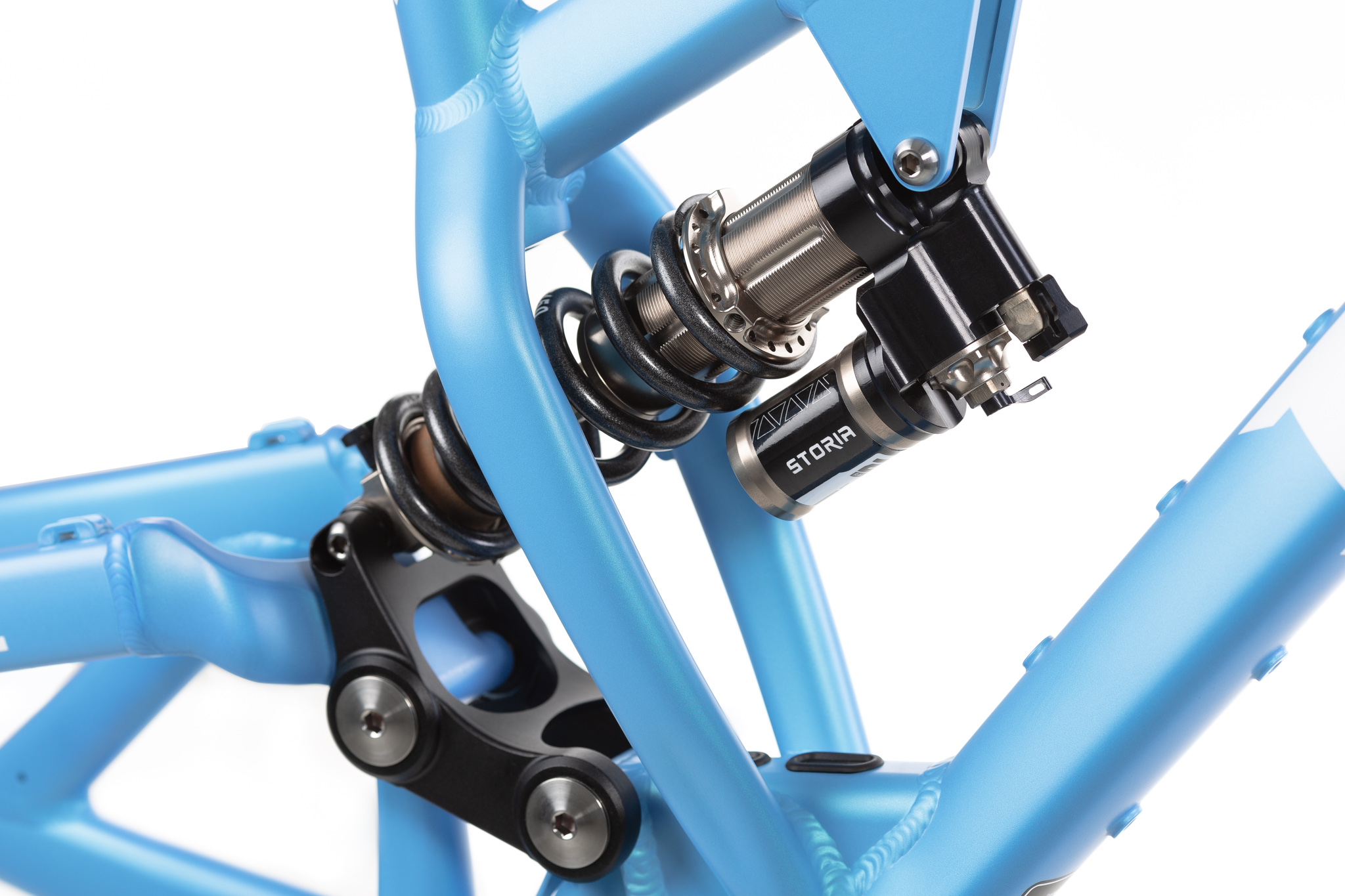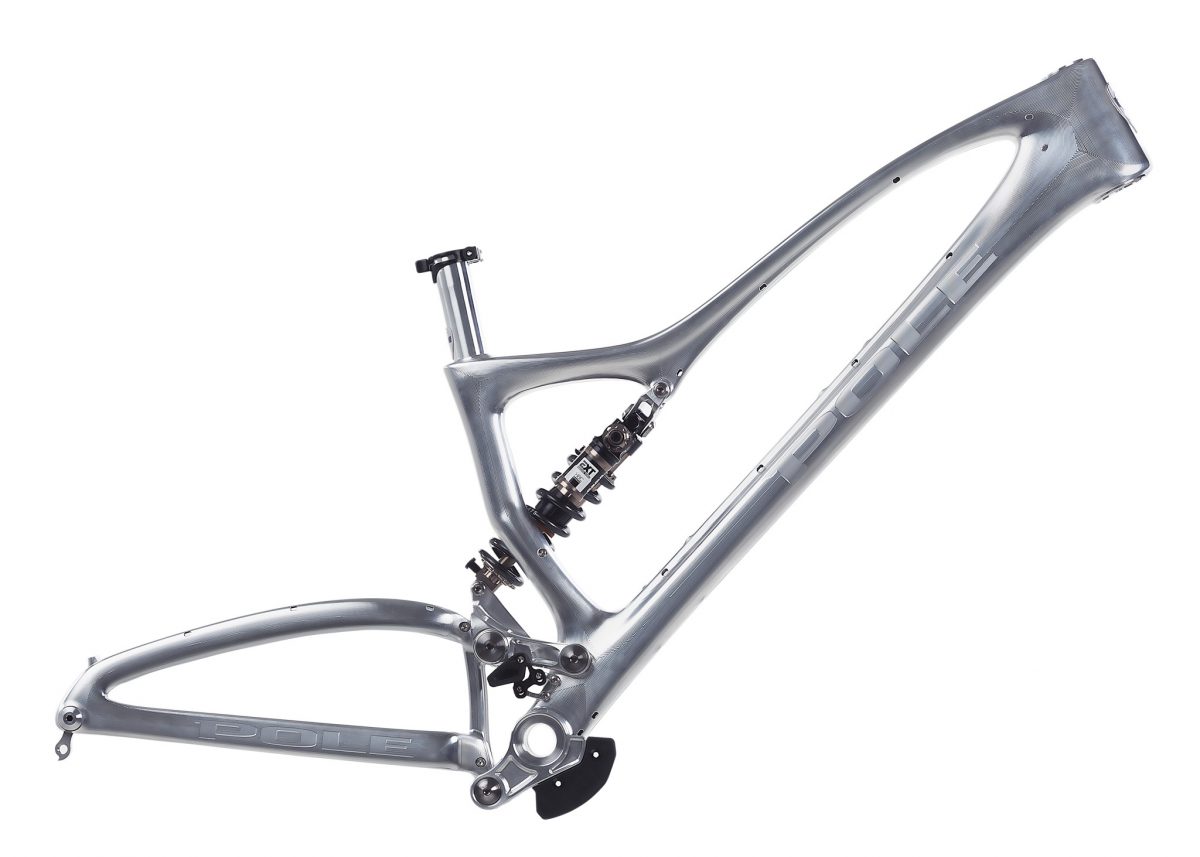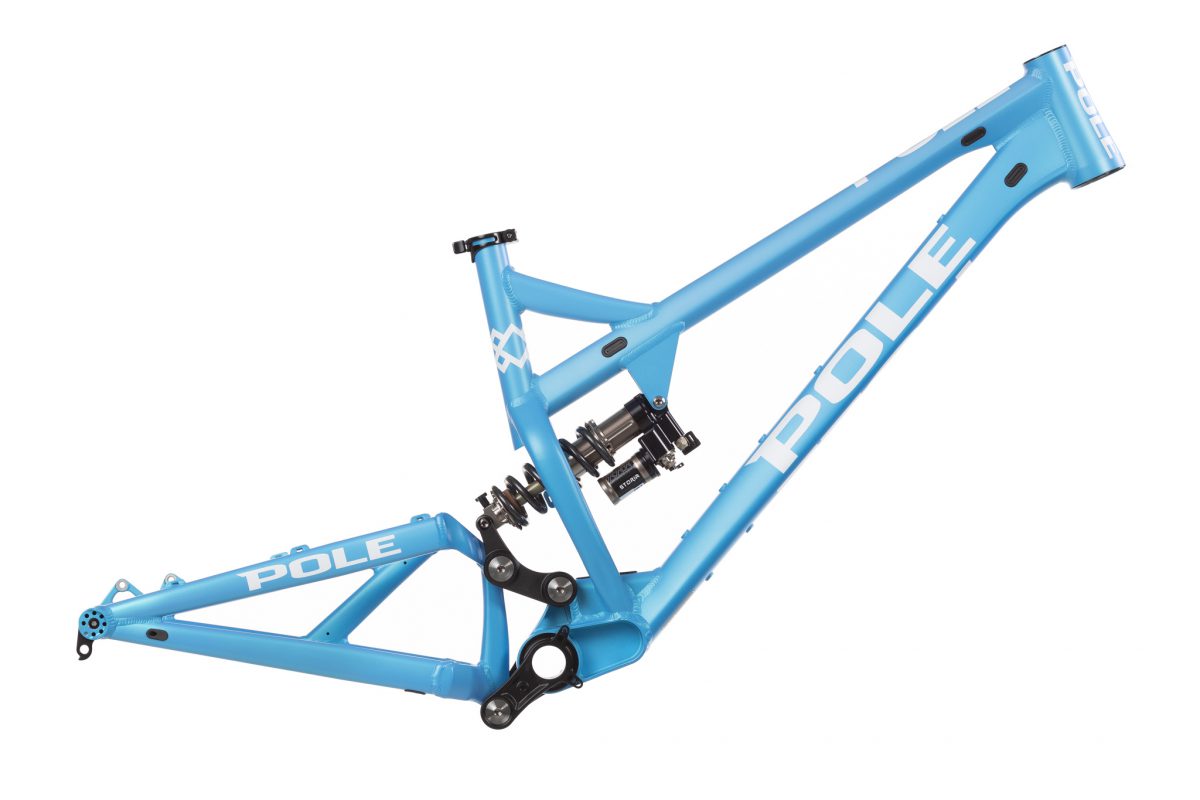
Pole Framesets and EN Goes EXT
UPDATE 12/2019: Check out this review of the EXT Storia Lok V3: Tested: EXT Storia Lok V3 Shock
Now you can get a high-end EXT shock with the EVOLINK and Machine frameset and the EN complete models with the same price that you got the Rock Shox Monarch Plus or the Super Deluxe. If you are waiting for your order that you purchased just a week ago and you want to upgrade, please contact our service@polebicycles.com
Why EXT?
We started to search an option for the most demanding customers a few years back. It’s not easy to find an alternative to already a superb product that the Rockshock Monarch or Super Deluxe is. We wanted to find a company that has high craftsmanship, a story and real scientific point in designing the shock. We have been working with EXT for a while now, and we have found them highly motivated on doing great products to mountain bikes. EXT is an Italian manufacturer of shocks, and their heritage goes back to 70’s. We visited the factory last summer, and we had sessions where the EXT engineers and we created a shock to Pole Machine during the visit. We did the testing with two engineers, a portable laboratory with proper dyno, vacuums and an uplift service. Before that, we had a few test shocks already here at Finland what we tested before we got into the fine-tuning. It took several runs and changes to the shock before we started to get even close. After we left EXT, Leigh Johnson tested the shock at La Thuile EWS and then we made small changes to the production. After that, we have been testing the Storia Shock that is going to the EVOLINK lineup. Here is Leo’s test run form the Dolomites Paganella Bikepark.
What is the real difference between shocks?
Shock has two main parts: the damper and the spring. The spring carries the load (your weight), and the damper eliminates excessive movement and slows down hits. The damper converts movement energy to heat. The damper is a tube filled with oil, and the piston has holes so that the piston can move through oil. The piston has shims (thin discs) that control the oil flow through the holes with different shaft speeds. Additional parts are the IFP reservoir what compensates the shaft volume. If there would not be and IFP, the shaft would not be able to move into the damper. Another option is the thru shaft design that is not used in MTB regularly. In this option, the shaft exits from the other side, so the shaft volume stays constant.
Roughly there are two different shock models which are used widely in MTB applications. A monotube and a twin tube shock. In monotube, the piston moves through the oil and in twin tube the oil circulates through compression valves. Also, there is a hybrid of these two versions. There is no clear performance difference between of the two shock models. The most significant difference between a monotube and twin tube is that a monotube needs to have more frame specific setup. The twin tube has more range of clicks that can be complicated to understand where the monotube is more straightforward for the user. Here is an excellent explanation of how these two dampers are different from each other.
The shock contains a lot of small parts that are important that the shock works appropriately. The most significant difference in quality between shocks is how accurate these parts can be made over and over again and how strict the quality control is. It makes a big difference if the shock is made in tens of thousands or is it made in hundreds. Also, the quality control is critical. SRAM and FOX have vast volumes of shocks made in one year, and the quality control needs to be faster than for the smaller companies. For example in EXT, every shock is assembled by an engineer who checks the shock quality by running the shock in dyno that can verify the shock damping performance. Also, the shock parts are made from higher quality materials.
Why you should stick to a shock that is made for Pole?
The performance difference between the modern shocks is very small. The main difference is that how the shock behaves in the frame you install it. Does the shock have appropriate damping curve and characteristics that support the frame kinematics? And here comes the part that is the most difficult to understand: The leverage ratio of the frame controls the shaft SPEED and how much force you need to put (and in which part of the travel) into the system so that it compresses. For example, if we have a leverage ratio of 3:1, when the rear wheel moves three millimeters, the shock moves one millimeter. The force needed for this is 7kg (with a shock of 400lbs/in) If the leverage ratio is 2:1 and the rear wheel moves 3mm, the shock moves 1,5mm. The force needed for this is 10,5kg. Also, the shaft speed just increased on the latter example, so the damper resits this movement more as well if the shim stack is not redesigned. A good frame designer understands these variables and understands the weight balance of the frame and also understands the other factors that I’m not getting in to here (this is nerdy enough already). If you get a shock that does not have the damping characteristics that are suitable for the frame, the bike underperforms. We use hundreds of hours testing the frames and shocks before we publish the bike and the shocks. I will write an article about our testing later. The reason why we don’t offer a big variety of shocks is that we don’t have resources to spend testing all shocks out there and it’s impossible for the engineers in the shock companies to guess what we are after. Also, some shocks just don’t perform as good as we would like so we just don’t sell them. This does not mean that the shocks are bad, they just doesn’t have the range for our kinematics.
If you are thinking about getting a shock from a local bike shop, you should think twice. Does the shop have enough knowledge and resources to help you after all? Usually, the sales pitch is that they can tune the shock however you wish it to be. Does the marketing pitch pay off when you think about you just read? There are basic methods on how to increase or decrease the shock characteristics, but if they don’t have a dyno, they will be guessing how much force they just added to your shocks damping. Also, they don’t probably understand the leverage ratio behavior of your bike, and also, you might not understand enough what you need for your shock. We hear many times even the professional racers talking about getting better mid-stroke support by adding this and that damping. If you think about the mechanics, you’ll understand that the shock does not know where it is if it does not have a mechanical position sensitive damping. The mid stroke support is created with frame design, spring rates, and damping altogether. ShockWiz is not going to help you with tuning because it lacks a lot of features. The recording interval of Shockwiz is too short, and it does not have elements of G-forces, time and distance. In short, you can not compare each ride and determine what characteristics of the track improved by the instructions by the ShockWiz. I’m not saying that the Shockwiz is entirely useless because it helps people who have no idea how to set up their bike if they have purchased a bike that has a lot of tuneability. For example, if you have a complete setup of Fox damping with all the low and high-speed damping and rebound damping and you don’t have any clue how to work them, it’s good to get a ShockWiz. What I’m saying is that none of the professionals should use the Shockwiz to design their dampers.
What next?
We will continue testing other shocks as well, and we want to help out everyone who has their favorite brand of shocks. It takes time to find other options as well, and there are still ways to improve the current options. We are working with ideas that could change the way we think about mountain biking suspension, but there is just too much history in the MTB world of misinformation and different opinions that the change comes slowly. We are at the moment at a very high level and getting better what we do is harder and harder every year but we want to push even further in performance.


